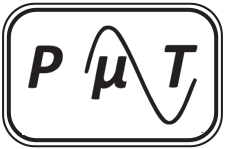Phase noise is a measure of the spectral purity of a signal and can be a critical attribute for many systems and applications. Phase noise is defined as noise power in a 1Hz bandwidth, at a particular frequency removed from the carrier, and the phase noise of the oscillator can impact overall system performance. In communications systems, phase noise of the local oscillator in a transmitter or receiver can cause the signal spectrum to spread out and leak into adjacent channels, causing noise and interference. Digital systems experience the effects of phase noise in the time domain, as jitter. Jitter will affect the digital modulation quality, resulting in increased bit error rates. High performance radar systems rely on the detection of extremely faint return signals from the target, and these signals can be easily masked by phase noise of the receiver’s local oscillator. Selecting the appropriate low phase noise oscillator is vital to ensuring overall system and application performance and reliability.
The advantage of ultra-low phase noise
Phase noise standards are implemented for good reason. By meeting or exceeding their specifications, you can optimize and maximize usage of the satellite resource. Well-designed earth stations with ultra-low phase noise have the advantages of:
✓ Improved availability (less susceptibility to other noise sources, even atmospheric/rain)
✓ Increased effective coverage area
✓ Reduced operating costs
✓ Reduced antenna size Lower civils/capital costs
✓ Higher throughput (combination of data rate, modulation and coding rate)
High Q Designs Improves Phase Noise Dielectric Resonators exhibit very High unload Q Factors at microwave frequencies.
Dielectric Resonator Oscillators (DROs) are microwave oscillators that use a dielectric resonator (DR) as the frequency stabilizing element in order to achieve excellent frequency stability, high Q and very low micro-phonics. The DR, when used as part of the resonating circuit of any active microwave device, produces a steady state oscillation under the right conditions at the resonant frequency of the DR.

